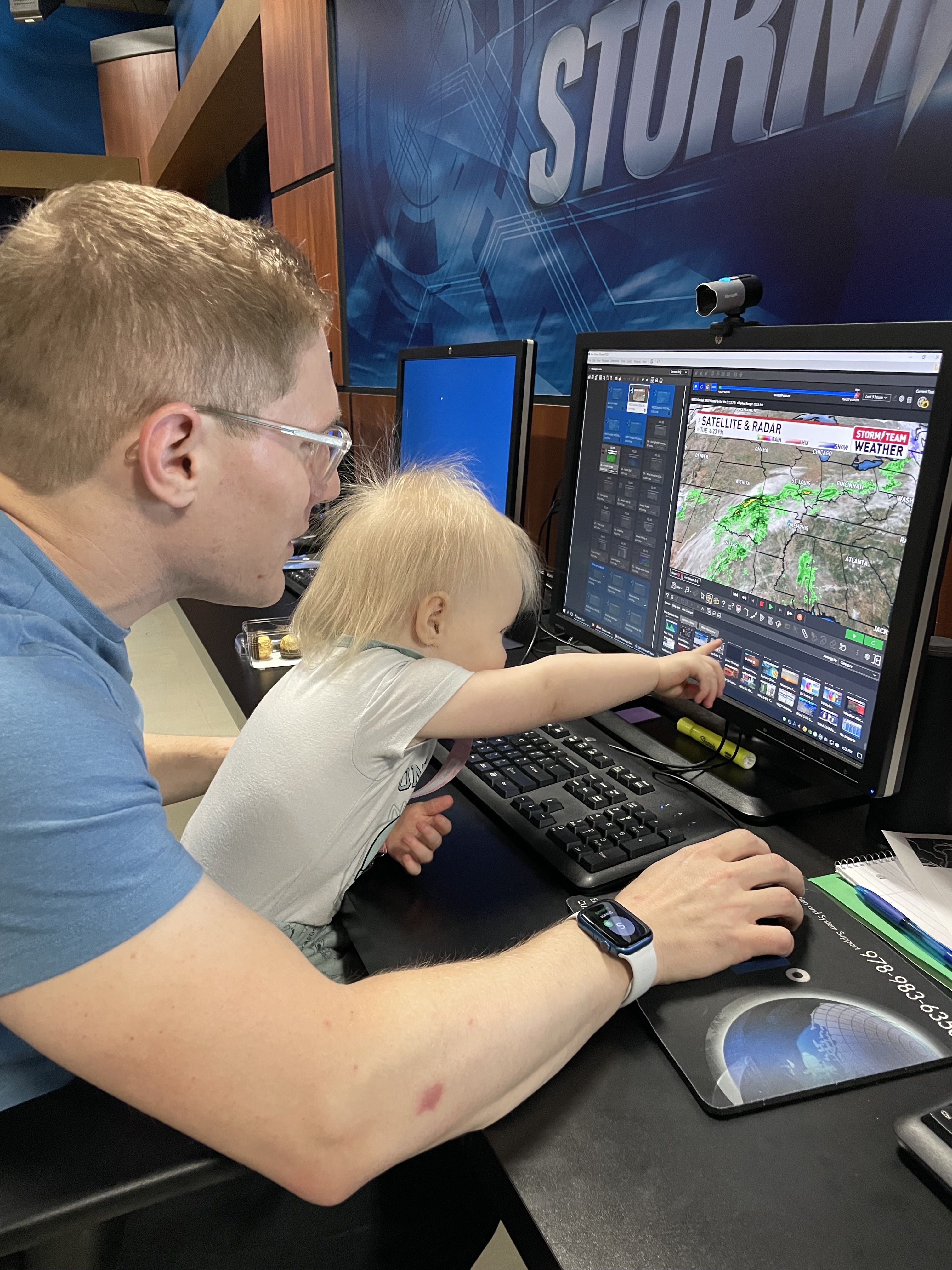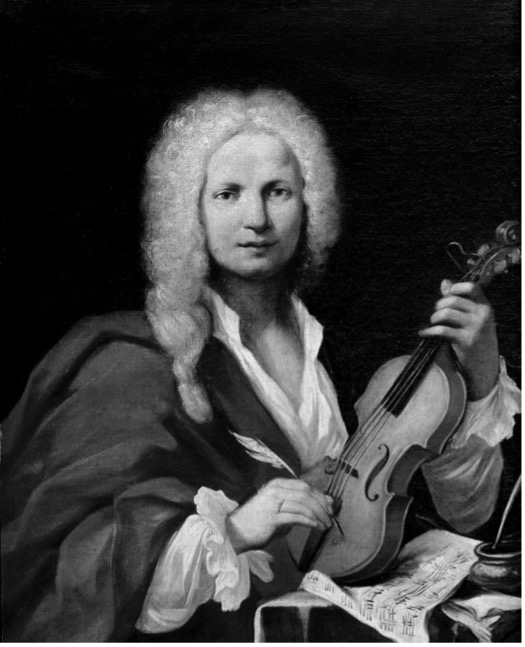Prairie Skies: September 2023
Prairie Skies
A Monthly Journal of Weather & Climate in the Prairie
September 2023; Volume 1, Issue 1
Heat Wave in the Prairie
Still, heavy air sat over the prairie making a few days difficult to breathe. Even those who prefer summer conditions to winter, wished for a brief tongue of Arctic air. Yet, the scene over the landscape held firm.
August is traditionally a very warm month following the warmest, July. Between the two months, this year, August captured the title of warmest with an average temperature of 86ºF.
From Sunday, August 20 to Thursday, August 24, National Weather Service issued an “Excessive Heat Warning” for the entire state. On Thursday afternoon the warning was extended until Friday when high temperatures and humidity failed to subside.
Observed temperatures from EIUs NWS Cooperative Weather Observation Station ranged from 92F to 101F. Combined with relative humidity values, the Heat Index maxed out at 112F.
The sultry conditions recently experienced were not the same as the summer of 2012. The lack of frequent rainfall throughout 2012, especially July and August, increased temperatures throughout the region. In July 2012, everyday but one had temperatures above 90F with 12 of those days higher than 100F (five days sat at 104F). Observed precipitation was 0.08”. The following month had 17 days above 90F without reaching beyond 100F. Total precipitation for August 2012 was higher at 2.77” but still below the 30-year average (3.34”).
While the lack of soil moisture caused air temperatures to increase in 2012, the 2023 heat wave resulted from higher relative humidity, not severe drought. Two ingredients kept harsh conditions in place: transpiration, and a strong persistent ridge in the upper atmosphere.
Transpiration is a process of vegetation that pulls moisture from the soil and exits through the stomata of the leaves. Frequent rainfall in July (5.34”) promoted plant transpiration through August. Fields of corn and beans increased relative humidity values for the region.
Aloft, a stagnate ridge of warm air trapped humidity and hot air throughout the Great Plains and western Midwest. The jet stream, which controls the movement of ridges and troughs, remained stalled along the U.S. and Canadian border.
The wave ended Friday, August 25th as a cold front and a line of severe thunderstorms pushed across the prairie with lighter, less humid air behind it. The relief was very much welcomed.
While summer conditions will remain through the fall, it is possible that the region will continue to experience occasional temperatures in the 90s, a well-known characteristic of the prairie landscape.
Cameron Douglas Craig
Picture of the Moment
The Next Generation

Former “SkyWatch” Forecaster, Darren Leeds (’11), shows his daughter, age 2, the graphics for his show at WCCU in Champaign, Illinois. Photo used with Permission.
Broadcast Met Program grows post-Pandemic
Online learning during the pandemic (spring 2020 – spring 2022) did not help to foster growth in the broadcast meteorology program at Eastern Illinois University’s Department of Geology and Geography. Interest in the field waned from the inability to inspire students about its career possibilities face-to-face. Masking rules created an interesting buffer between professor and students to get students to commit to a field that is sometimes unfamiliar to incoming freshmen.
It is well-established that young students find weather fascinating. But students are sometimes hesitant to declare it as a career due to the constant ridicule a weather person receives from the public or the lack of financial rewards.
While some programs across the country have no difficulty in attracting students in broadcast meteorology due to notoriety, the small program at EIU uses the entry-level course, Weather & Climate, to promote the advantages of the program as a future career.
In the past, there have only been a few students declaring broadcast meteorology as a minor immediately after enrolling at the university. Many students who completed the program as a career did not consider it a possibility until they found the lectures extremely interesting. Perhaps they entered the course with a sparking interested from their youth. Perhaps they just gave it a chance. No matter the reason, the lack of uninhibited lectures did not help the program or its sister program, WEIUs “News Watch.”
During the pandemic, there were only two students actively engaging in broadcast meteorology with another only pursuing atmospheric science. Since last semester, the program has added four new students. Three of the added students declared the minor through the professor’s enticement or simply acting on their previous youthful interests.
The growth in the program presents a new welcomed problem, how to fit the students into the few slots in WEIUs “News Watch.” A similar problem occurred in 2011 and 2012 when a five-minute broadcast on Saturdays and Sundays was added to give the overflow of students an opportunity to practice the art.
Catch our students in broadcast meteorology on WEIUs “News Watch,” produced live, on weekdays at 5:30 P.M.
Cameron Douglas Craig
Student Spotlight
Built for Football, Former Panther takes on Weather with Determination

Will Redden, WEIUs “SkyWatch” Forecaster, takes a moment to welcome his viewers during WEIUs “News Watch” news program.
Among the other student anchors and behind-the-scenes staff at “News Watch,” Will Redden, from Pennsylvania, is not difficult to identify in the studio. Nicknamed “Tiny,” Redden is the tallest and broadest member of SkyWatch. In fact, the studio camera must tilt up in order to capture his unique height. He began to take interest in the field from a fellow football player, Stephen Elmore (’21), who is a meteorologist at KFSM-TV in Fort Smith, Arkansas.
Hesitant at first, he began to acknowledge his abilities in science from taking classes in the Department of Geology & Geography. Soon after, Redden declared the minor and enrolled in “Broadcast Meteorology Practicum,” spring 2021. During the last two weeks of the course, he was put in front of the green wall due to staffing issues. Although nervous, he succeeded. He also has a natural talent in making people feel at home, a perfect fit for broadcast communication.
The switch from football took a great deal of courage. When something you have loved doing for many years is met with preparing for your future, it is a difficult decision. In Redden’s case as well as Elmore’s, there is a bit of uncertainty, but both took it as a challenge. Will remains confident that he will continue to grow and prosper in his unexpected path.
Watch Will Redden on WEIUs “News Watch” at 5:30 P.M., Monday through Thursday.
Cameron Douglas Craig
Climate Brief
The Dog Days of Summer: A Climate Summary of July, Charleston, Illinois
July is typically a very hot month for Charleston, IL, with the 30-year average temperature (1971-2000) of 76.7°F. The average temperature for 2023 was 77.3°F, which is just above the climatological average. The average high temperature for the month ranges 87°F to 88°F. The average low temperature for the month is 64° to 65°F. Record highs were recorded on July 14th and 15th in 1936, with a high temperature of 110°F on both days. The warmest Julys on record in Charleston was set in 1936, with an average temperature of 84.7°F. July can be a pretty brutal month because of the high temperatures combined with the humidity. July also tends to be one of the wetter months of the year, with a 30-year average precipitation of 4.00″. July 2023 recorded 5.34″ of precipitation, or 1.34″ above average. 1987 was one of the wettest Julys on record for the Charleston area with 10.10″ of precipitation.
Ryan Lay
From the Classroom
Dew Point & Cloud Height, When to Expect Precipitation
Dew point temperature is the temperature at which condensation occurs. When coupled with temperature, it is an indicator of how much moisture is in the atmosphere, and when precipitation is possible.
Temperature (T) is always equal to or higher than the dew point temperature (Td). When you subtract the dew point temperature from temperature, the result is the dew point depression (Tdd). High Tdd indicates dry conditions and low Tdd values are moist. Precipitation is likely when the Tdd is equal to or less than 8F.
The equation: T – Td = Tdd
Cloud height (Ch) is also an indicator of the likelihood of precipitation. When you take Tdd and multiply it with the empirical value 225 feet, you calculate the based cloud height. If, for example, the Tdd is 2F, and you multiply it with Ch (225’), the result is a cloud base height of 450’. In this scenario, precipitation is occurring. In dry conditions, for example, the Tdd is 20F resulting in a cloud height of 4,500’.
Extended equation: (T – Td)Ch
In an elementary manner, the closer the dew point temperature is to temperature, there will be an increase in the probability of precipitation. It is the same with the cloud height. The closer the base of the cloud is to the surface of the Earth, there will be an increase in the probability of precipitation.
Cameron Douglas Craig
Retrospective
Dust Bowl Record Highs Still Unbroken
During the heat wave that inundated the prairie this summer, some asked if it was the worst heat wave to occur. The answer is, “No.” Daytime highs were much worse during the nation’s worst meteorological event, “The Dust Bowl” (1934-1939). The highs continue to remain all-time records for Charleston.
For this analysis, only the three traditionally warm months, July to September, were used. Between 1930 and 1933, the years prior to the Dust Bowl, the total number of record highs exceeding 100F remains at 17. During the Dust Bowl (1934-1939), the record temperatures at or above 100F sit at 23 with 1936 having the most. In fact, a ten-day stretch, July 6 – 15, 1936, remains unbroken when temperatures were between 102F to 110F.
The reason behind the extremely high temperatures during the Dust Bowl was the lack of soil moisture that influenced surface temperatures. If the soil is void of moisture, latent heat has nothing to work with, therefore, temperatures increase.
Cameron Douglas Craig
Notes from an Observer
Practical Experience, From High School to a Declared Major

Emily Davis, EIU Class of 2027, gives a thumbs up to WEIU SkyWatch Local Forecaster Will Redden.
In 2021, I was given an amazing opportunity to start doing weather observations for the Department of Geology & Geography and National Weather Service the summer before I went into my junior year of high school. Because I loved being part of the team and the process that gives everyone their daily weather, I decided to apply for an internship my senior year, 2022-2023, through my high school, and it was worth it!
I spent every other day, during my internship, in the WEIU studio, where university students prepared and broadcast the weather. I observed their work, and learned so many new things about the science that I was able to forecast, present, and even worked the cameras behind the scenes. After my experience doing weather observations for EIU and NWS, and doing some broadcasts myself, I was certain of my decision to attend EIU and major in Geography. I also decided to minor in Broadcast Meteorology because of the internship. I am now doing weather observations again this year as a freshman at EIU and working behind the scenes at WEIU.
For anyone who is remotely interested in weather or geography, I highly recommend studying at this school because you are given so many fun and interesting opportunities.
Emily Davis
Climate Outlook
September 2023
August was above normal in temperature and below normal in precipitation. September is expected to remain near normal in temperature (68.1F) and precipitation (3.38”). Expect temperatures to exceed the normal, periodically, but also dip below the normal. As long as precipitation remains near normal or slightly above, the abnormally dry conditions could remain steady or slightly improve.
Cameron Douglas Craig
From Earth to Table
Tomato & Mozzarella Toast
Tomato season is in its prime. Here is a simple recipe to enjoy the plethora of plump tomatoes from your garden! And it is super simple, too!
- 1 large tomato, thickly sliced
- 4-5 slices of Italian/French bread
- 1-2 cups of grated mozzarella cheese
- Pinch of basil
- Pinch of salt
- Butter
Layout the slices of bread. Spread butter across all slices. Slightly toast the bread in a toaster oven. Remove from the toaster oven. Place a thick slice of tomato on each of the slices of bread, salt, and cover with a mound of mozzarella. Sprinkle with dry basil. Put the constructed slices on foil in the toaster oven and toast until the mozzarella begins to turn a bubbling light brown. Serve with a small salad with your choice of dressing. Enjoy!
Cameron Douglas Craig
Climate and Music
Vivaldi’s “Four Seasons: Autumn”
As a geographer, climatologist, and assistant conductor of the Eastern Symphony Orchestra, I spend one lecture each semester enlightening students how culture merges with climatology. There are many examples of composers using music to describe the landscape. These illustrations are called “programme” music, when the composer uses instruments, rhythms, and harmonies to convey specific characteristics found in the northern hemisphere’s climate biomes.
Antonio Vivaldi (1678-1741), an Italian Baroque violin virtuoso and composer, wrote four violin concertos that painted landscape scenes of the “Four Seasons.” Each concerto features a solo violinist, string orchestra with a basso continuo (cello and/or lute, a guitar looking instrument, with harpsichord).

Probable portrait of Antonio Vivaldi, artist unknown, c. 1723. Public Domain.
This month I am exploring “Autumn” (Concerto No. 3 in F major, Op. 8, RV 293) because the Autumnal Equinox begins on September 23 at 1:49 A.M.
Like many concertos of this period, there are three movements in this work: fast (Allegro), much slower (Adagio molto), and fast (Allegro).
The poem Vivaldi used starts the first movement (Translated from the Italian by Armand D’Angour, 2019).
“Celebrates the peasant, with songs and dances,
The pleasure of a bountiful harvest.
And fired up by Bacchus' liquor,
many end their revelry in sleep.”
This first, fast movement is very rhythmic suggesting a celebration after the harvest along with the bounty they collected, a very proud harvest. It is evident, at some points, that one of the harvesters is enjoying the time with a bit too much of the drink. A little later, he passes out, but the party continues without him.
The second movement is much slower suggesting that everyone is now enjoying a deep sleep after a night of partying.
“Everyone is made to forget their cares and to sing and dance
By the air which is tempered with pleasure,
And (by) the season that invites so many, many
Out of their sweetest slumber to fine enjoyment.”
The final and fast movement paints the picture of the next day, the hunt. You can hear the gallop of the horses, the call of the horns, the gun shots (plucking strings) and dogs barking (low string strikes), and the frantic beast running to avoid capture. In the end, well…
“The hunters emerge at the new dawn,
And with horns and dogs and guns depart upon their hunting.
The beast flees and they follow its trail;
Terrified and tired of the great noise
Of guns and dogs, the beast, wounded, threatens Languidly to flee, but harried, dies.”
What a masterpiece in visual signifiers! Audiences during the early eighteenth century could definitely see the autumn scene in their mind.
In December, I explore winter precipitation and how Vivaldi used the string sounds for ice.
*Watch/listen to this concerto on YouTube; search for “Vivaldi Autumn Carla Moore.”
Cameron Douglas Craig
Our Staff
EIU WeatherCenter & WEIUs SkyWatch Weather Center
Cameron Craig, EIUWC Director/WEIU SkyWatch Consultant
Kelly Goodwin, WEIU “News Watch” News Director
Ryan Lay, EIUWC Undergraduate Director
Scott Ealy, SkyWatch Forecaster
Will Redden, SkyWatch Forecaster
Ben Whitney, SkyWatch Analyst
Emily Davis, SkyWatch Analyst
Sam Huckstep, EIUWC Analyst
Charlie Stewart, EIUWC Analyst
Gavin Garcon, EIUWC Analyst
References
September 2023, Vol. 1, Iss. 1
Craig, Cameron D. Without the Sun: Studies in Meteorology & Climatology. 2023.
D’Angour, Armand. “Vivaldi’s Four Sonnets.” Accessed August 29, 2023. https://www.armand-dangour.com/2017/07/vivaldis-four-sonnets/.
Midwest Regional Climate Center, Climate Calendars (1971-2000), 111436, Charleston, Illinois.
NWS/EIU Cooperative Observation Station Data, 111436, Charleston, Illinois.
Oliver, John E. Encyclopedia of World Climatology. Dordrecht, Netherlands: Springer, 2005. Print.
U.S. Drought Monitor, National Drought Mitigation Center, University of Nebraska-Lincoln.
Eastern Illinois University
Department of Geology & Geography
600 Lincoln Avenue
Charleston, IL 61920
217.581.2626
WEIU-TV, “News Watch”
1521 Buzzard Hall
Charleston, IL 61920
217.581.9348 | 877.727.9348
A service of Eastern Illinois University, EIU WeatherCenter & WEIUs Sky Watch Weather Center








